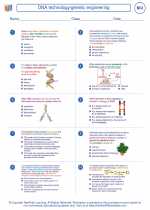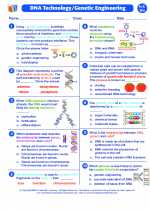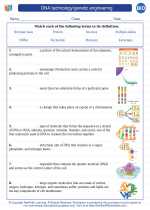Composition in Biology
Composition in biology refers to the chemical makeup of living organisms at various levels of organization. This includes the composition of cells, tissues, organs, and organ systems. Understanding the composition of living organisms is crucial for comprehending their structure and function.
Cellular Composition
Cells are the basic unit of life and are composed of various molecules including proteins, lipids, carbohydrates, and nucleic acids. These molecules play essential roles in the structure and function of cells.
Proteins
Proteins are composed of amino acids and are involved in a wide range of cellular functions including enzyme catalysis, structural support, and transport of molecules.
Lipids
Lipids are diverse molecules that include fats, phospholipids, and steroids. They serve as energy storage, structural components of cell membranes, and signaling molecules.
Carbohydrates
Carbohydrates are composed of sugars and are important for energy production, cell recognition, and as structural components in the form of cellulose in plant cell walls and chitin in the exoskeleton of arthropods.
Nucleic Acids
Nucleic acids, including DNA and RNA, are composed of nucleotides and are involved in the storage and expression of genetic information.
Tissue and Organ Composition
Cells with similar functions and structures group together to form tissues, which then come together to form organs with specialized functions. The composition of tissues and organs varies depending on their specific roles.
Connective Tissue
Connective tissue is composed of cells such as fibroblasts and a matrix of proteins and polysaccharides. It provides support and connects different tissues and organs in the body.
Muscle Tissue
Muscle tissue is composed of muscle fibers that contain proteins such as actin and myosin, which are responsible for muscle contraction and movement.
Nervous Tissue
Nervous tissue is composed of neurons and support cells. Neurons transmit electrical signals, while support cells provide insulation and support for the neurons.
Organ Systems Composition
Organ systems are groups of organs that work together to perform specific functions in the body. Each organ system has its own unique composition tailored to its function.
Cardiovascular System
The cardiovascular system is composed of the heart, blood vessels, and blood. The heart is made of cardiac muscle tissue, while blood vessels are composed of layers of smooth muscle and connective tissue.
Respiratory System
The respiratory system is composed of the trachea, bronchi, and lungs. The lungs contain specialized tissue for gas exchange, including alveoli composed of epithelial and endothelial cells.
Study Guide
- Define composition in biology.
- List the major molecules found in cells and their functions.
- Explain the composition of connective tissue and its role in the body.
- Compare and contrast the composition of muscle and nervous tissues.
- Describe the composition of the cardiovascular system and its role in the body.
◂Biology Worksheets and Study Guides High School. DNA technology/genetic engineering

 Worksheet/Answer key
Worksheet/Answer key
 Worksheet/Answer key
Worksheet/Answer key
 Worksheet/Answer key
Worksheet/Answer key
 Vocabulary/Answer key
Vocabulary/Answer key
 Vocabulary/Answer key
Vocabulary/Answer key
 Vocabulary/Answer key
Vocabulary/Answer key
